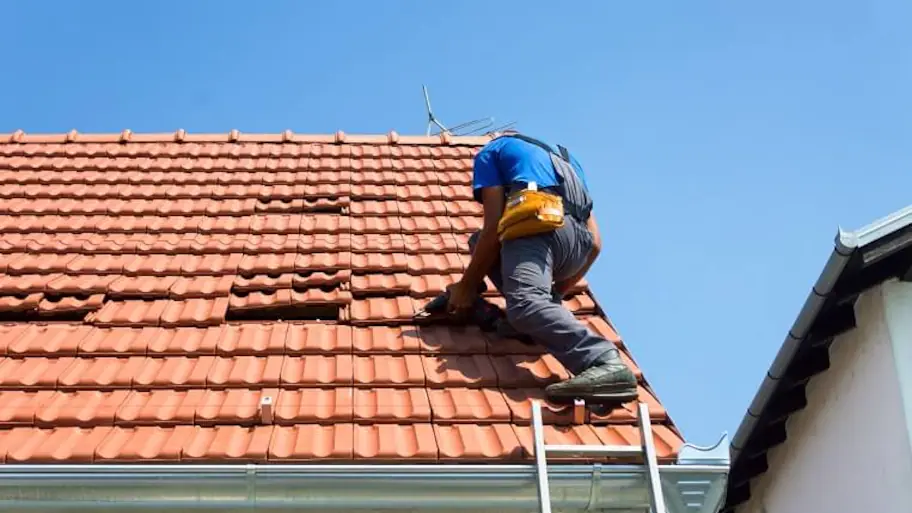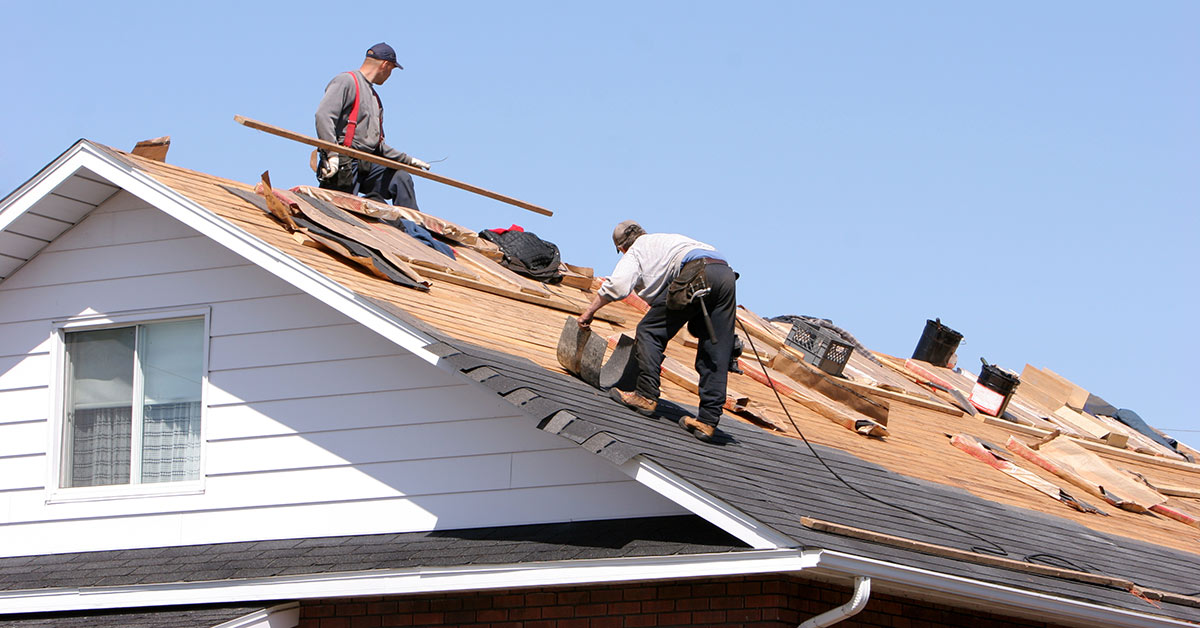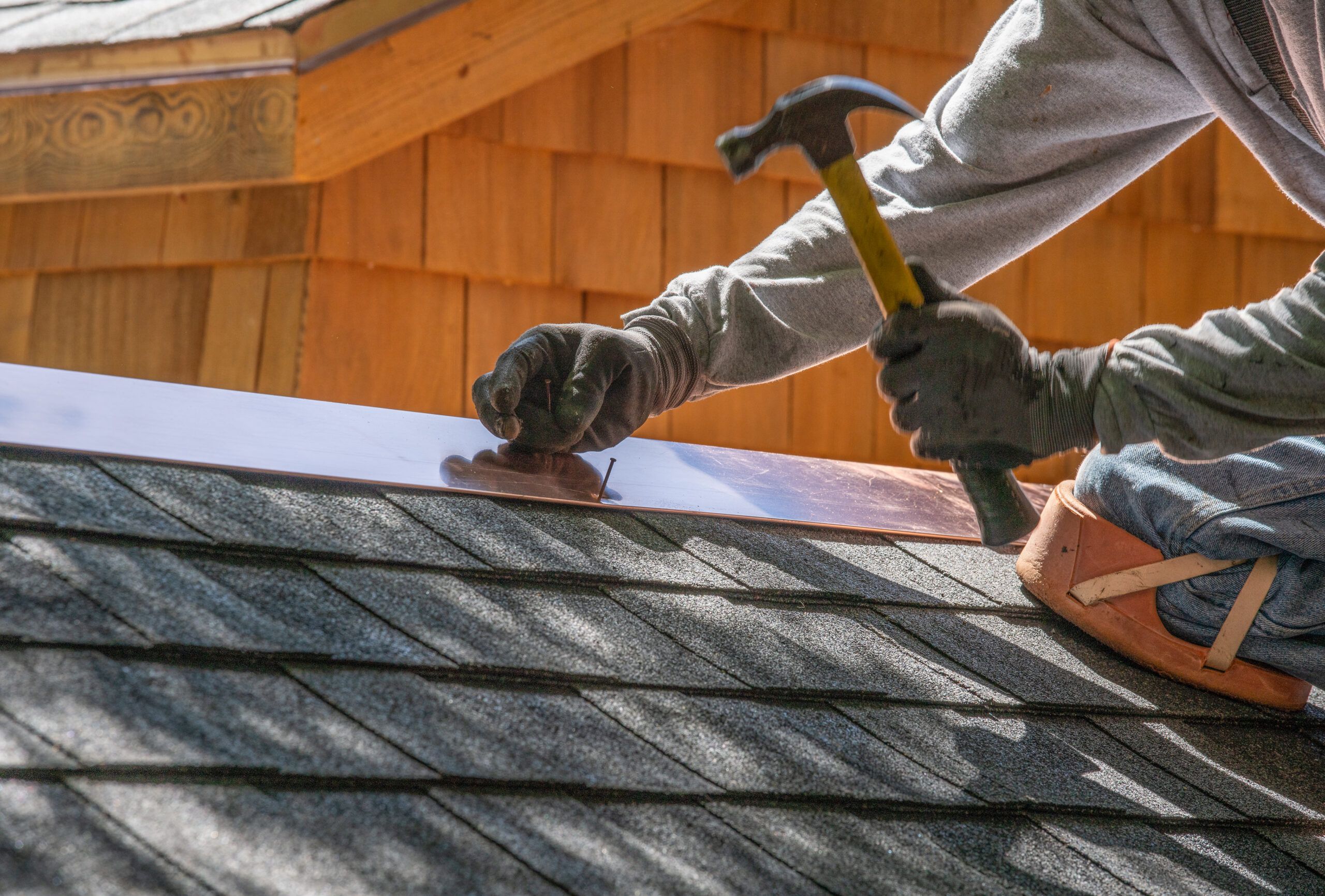Preventative Roofing System Upkeep: Tips to Avoid Costly Repairs
To stay clear of pricey repair work, you ought to check your roof covering consistently for missing or harmed roof shingles, tidy your downspouts and rain gutters to stop blockages, and trim looming branches. These easy steps can substantially prolong your roofing system's lifespan, and there's plenty more you can do to safeguard your investment.
Examine Your Roofing System On A Regular Basis
When you evaluate your roofing on a regular basis, you can capture possible problems prior to they come to be pricey fixings. Begin by inspecting for missing, split, or curling tiles; these are signs that your roofing system might need attention.
After a tornado, it's crucial to assess your roof for damage caused by high winds or heavy debris. Don't neglect to evaluate the bottom of your roof covering in the attic; look for indicators of wetness or mold and mildew, which can indicate leakages.
Tidy Rain Gutters and Downspouts
Routine roof examinations normally lead to an important job: cleaning your downspouts and seamless gutters. Blocked rain gutters can trigger water to back up, resulting in potential roof leaks and structural damages. To avoid these problems, make it a behavior to check your gutters at the very least two times a year, specifically after heavy tornados or drop when leaves collect.
Don't fail to remember to examine downspouts for obstructions. If water isn't moving freely, you may require to utilize a plumber's serpent or a tube to clear the obstruction.
Address Overhanging Branches
Overhanging branches can posture a significant danger to your roof covering, so it is essential to cut them routinely. Not just can they create damage throughout storms, but they can also invite pests. Make it a behavior to inspect for any signs of wear or damages to keep your roofing in top shape.
Trim On A Regular Basis
Among the most essential steps in roof covering maintenance is to trim those branches that hang too near your home. Overhanging branches can cause significant problems, from particles build-up to possible this blog damages throughout tornados. On a regular basis cutting down these branches maintains your roofing system clear and reduces the threat of leaks and parasites. Make specific to assess the health of the trees around your home; dead or weak branches posture an even better hazard. Objective to cut branches at the very least six feet away from your roofline, ensuring they won't enter into call with your shingles. You do not need to tackle this task alone; hiring a professional arborist can guarantee effective and safe cutting, safeguarding your roof covering and enhancing your home's total appearance.
Examine for Damage
 roof repair
roof repair
Examine for Damaged or Missing Shingles
It's important to check your shingles routinely for any damage or missing out on items. Change missing tiles immediately to avoid additional troubles if you find any kind of concerns. Keep an eye on exactly how the climate affects your roof covering, as extreme problems can lead to tear and wear.
Evaluate Consistently for Damages
Routinely checking your roofing for damages is important to keeping its honesty and lengthening its lifespan. Check your roof covering after heavy tornados or strong winds, as these problems can dislodge or harm shingles. By making roofing system inspections a routine part of your upkeep routine, you can catch problems early and conserve on your own from pricey repair work down the line.
Replace Missing Out On Tiles Promptly
After looking for any type of damage throughout your evaluations, you might discover that some shingles are missing out on or endangered. Do not wait to replace them; timely action can protect against additional problems. Missing out on shingles subject your roofing to wetness, which can bring about leaks and more substantial damage over time.
Make certain to use tiles that match your roofing system's color and style for a seamless look. Keeping your roofing in top shape is necessary for securing your home and preventing costly fixings down the line.
Screen Climate Influence Regularly
As storms roll with your area, keeping a close eye on your roofing system becomes vital. After each storm, take a moment to check your roof for any type of harmed or missing roof shingles. Climbing up onto the roof isn't constantly needed; you can frequently detect issues from the ground with binoculars.
 roof repair
roof repairGuarantee Appropriate Air Flow
While many property owners focus on the exterior and structural facets of their roofing systems, ensuring proper ventilation is vital for preserving its durability and efficiency. Poor air flow can lead to heat accumulation and dampness build-up, which can trigger damage over time.
Proper ventilation not just boosts your roofing's life expectancy however also improves energy effectiveness, maintaining your home comfy year-round. By taking these steps, you're spending in your roofing's health and wellness and avoiding pricey repair services down the line.
Try to find Indicators of Leakages
Appropriate air flow helps protect against dampness build-up, yet also with great air movement, it's crucial to maintain an eye out for indications of leakages. Start by inspecting your ceilings and walls for water discolorations or discoloration, which can show a leak over.
Outdoors, examine your roofing system for missing tiles, fractures, or damaged flashing, as these susceptabilities can lead to leaks. Frequently checking for these indicators will aid maintain your roofing's integrity and keep your home risk-free and completely dry.
Set Up Specialist Examinations
 roof repair
roof repair
Goal for at least one evaluation each year, preferably in the spring or autumn, to align with seasonal adjustments. Throughout these inspections, specialists can identify potential dangers like missing tiles, compromised blinking, or indications of mold. They'll likewise inspect for particles buildup that can cause water pooling.
Don't wait for visible signs of problem; taking positive actions can prolong your roofing's life expectancy. Spending in routine assessments not just protects your home but likewise gives you tranquility of mind understanding your roof covering remains in excellent condition.
Frequently Asked Questions
How Typically Should I Execute Roof Covering Inspections?
You need to execute roof covering evaluations a minimum of two times a year, ideally in spring and autumn. Normal checks aid you identify possible problems early, conserving you money and time on pricey fixings down the line.
What Devices Do I Need for Roofing System Maintenance?
For roof covering maintenance, you'll require a strong ladder, safety belt, roof nails, a hammer, an utility blade, caulk, a trowel, and a flashlight. Don't neglect handwear covers and safety goggles to maintain yourself protected!
Can I Clean My Roof Covering Myself?
Yes, you can clean your roofing on your own. Simply make particular you have the right tools, wear safety equipment, and adhere to proper methods. It is necessary to be mindful to avoid crashes and assure efficient cleaning.
Exactly How Can I Recognize Roof Leakages Early?
To determine roof leakages early, you'll intend to inspect your roofing system regularly. Seek water discolorations, mold, or missing tiles. Pay interest after heavy rain, and don't hesitate to inspect the attic for wet places.
What Are the Indicators I Required a New Roofing System?
If you observe crinkled or missing shingles, relentless leakages, or water discolorations on ceilings,You'll need a new roof covering. Furthermore, if your roofing system's age surpasses twenty years, it's smart to ponder replacement quicker as opposed to later.
To avoid costly fixings, you ought to check your roofing system frequently for missing or damaged tiles, clean your gutters and downspouts to stop clogs, and trim looming branches. Missing out on shingles expose your roofing to dampness, which can lead to leaks and even more extensive damage over time.
After each tornado, take a moment to check your roofing for any harmed or missing shingles.Outside, analyze your roof covering for missing out on roof shingles, fractures, or harmed blinking, as these vulnerabilities can lead to leakages.To recognize roofing system leaks early, you'll desire to examine your roofing system routinely.